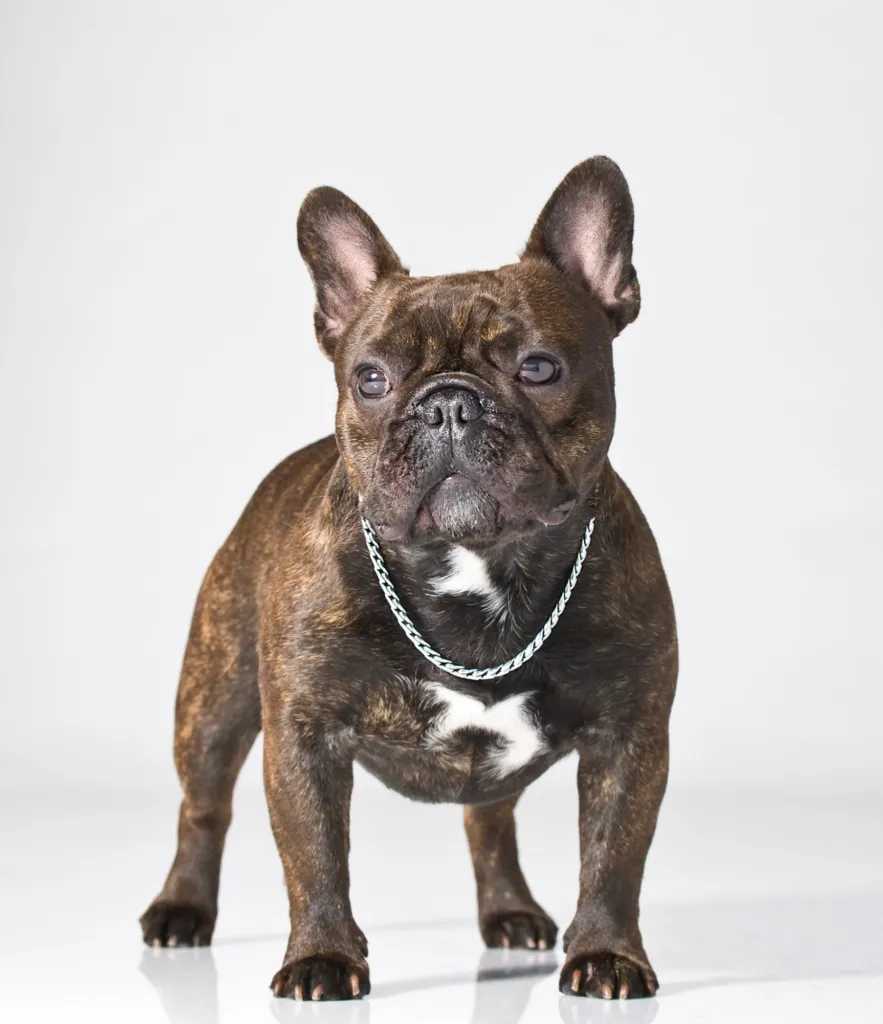French Bulldogs, with their bat-like ears and charming personalities, have captured the hearts of dog lovers worldwide. While many colors and patterns exist within the breed, the black French Bulldog often sparks curiosity and intrigue. This guide delves into the world of black Frenchies, exploring their genetics, appearance, and what makes them so unique.
Standard vs. Non-Standard Colors: Understanding the French Bulldog Spectrum
Before we dive specifically into the black French Bulldog, it’s essential to understand the distinction between standard and non-standard colors in the breed. According to most kennel clubs, standard colors include:
- Brindle
- Cream
- Fawn
- Black
- Any combination of the above
Non-standard colors, often more rare and sought-after, can include:
- Blue
- Merle
- Lilac
- Isabella
- Chocolate
- Blue Fawn
- Platinum
- Any mix of the above + tan points
Keep in mind that non-standard colors often come with a higher price tag due to their rarity and the genetics involved in producing them.
The Alluring Black French Bulldog: More Than Meets the Eye
A true black French Bulldog boasts a solid black coat without any traces of brindle or other markings. However, achieving this pure, jet-black coloration is surprisingly rare. Often, even in dogs that appear entirely black, subtle brindle markings may peek through upon closer inspection.
It’s also crucial to differentiate between a truly black French Bulldog and one that is simply very dark brindle. Brindle, a common pattern in Frenchies, consists of a base coat of fawn hairs interspersed with black hairs. In some cases, the black hairs can be so dominant that they give the impression of a solid black coat.
Genetics Behind the Black Coat
The genetics of coat color in French Bulldogs are complex and fascinating. The black coat color is determined by the presence of the dominant “K” allele at the K locus. The K locus influences the expression of the Agouti gene, which controls the production of phaeomelanin (red/yellow pigment) and eumelanin (black/brown pigment). To be a truly black French Bulldog, the dog must have at least one copy of the dominant K allele (K/K or K/k).
Distinguishing a True Black French Bulldog
So, how can you tell if a French Bulldog is truly black? Here are a few key indicators:
- Coat Color: The coat should be uniformly black, without any visible brindle stripes or other markings.
- Nose, Eye Rims, and Paw Pads: These should all be black.
- Genetic Testing: The most definitive way to confirm a dog’s coat color genetics is through DNA testing.
Caring for Your Black French Bulldog
Caring for a black French Bulldog is essentially the same as caring for any other Frenchie, regardless of color. Here are some essential tips:
- Diet: Feed your French Bulldog a high-quality diet formulated for small breeds.
- Exercise: French Bulldogs are prone to overheating, so avoid strenuous exercise in hot weather. Short walks and playtime indoors are usually sufficient.
- Grooming: Black French Bulldogs have short, smooth coats that require minimal grooming. Regular brushing will help to remove loose hair and keep their coat healthy.
- Health: French Bulldogs are prone to certain health issues, such as brachycephalic syndrome, hip dysplasia, and skin allergies. Regular veterinary checkups are essential.
 Black French Bulldog puppy with a curious expression
Black French Bulldog puppy with a curious expression
Brindle coloring in a French Bulldog is one of the most common patterns. Brindle French Bulldogs have a base coat of fawn hairs through which black hairs extend in bands to produce a coat that can range from a “tiger” brindle (more fawn hairs predominate) to the more common brindles (black hairs predominate). The light/tiger brindle pattern is also known as “reverse brindle” and is generally more rare.
Are Black French Bulldogs Rare?
While black is considered a standard color, truly solid black French Bulldogs are less common than brindle or fawn varieties. The genetic requirements for a solid black coat, coupled with the potential for hidden brindle markings, contribute to their relative rarity. This rarity can influence their price, with breeders often charging more for truly black Frenchies.
Potential Health Considerations
It’s important to note that coat color itself generally doesn’t directly impact health. However, responsible breeders prioritize health testing and genetic screening to minimize the risk of common French Bulldog health problems.
Finding a Reputable Breeder
If you’re interested in acquiring a black French Bulldog, it’s crucial to find a reputable breeder who prioritizes the health and well-being of their dogs. Look for breeders who:
- Conduct health testing on their breeding dogs.
- Provide a health guarantee.
- Are knowledgeable about the breed and its specific health concerns.
- Allow you to meet the parents of the puppies.
- Raise their puppies in a clean and stimulating environment.
 Fuli, a blue French Bulldog, standing on a rock with waves coming in and splashing on the rocks behind him
Fuli, a blue French Bulldog, standing on a rock with waves coming in and splashing on the rocks behind him
Füli is My Pawesome Frenchies OG. He is a solid Blue French Bulldog
The Endearing Appeal of the Black French Bulldog
The black French Bulldog, with its sleek coat and captivating presence, holds a special allure for many dog enthusiasts. Whether you’re drawn to their striking appearance or simply appreciate the breed’s charming personality, a black Frenchie can make a wonderful companion. Remember to do your research, find a responsible breeder, and be prepared to provide your new furry friend with the love, care, and attention they deserve.
